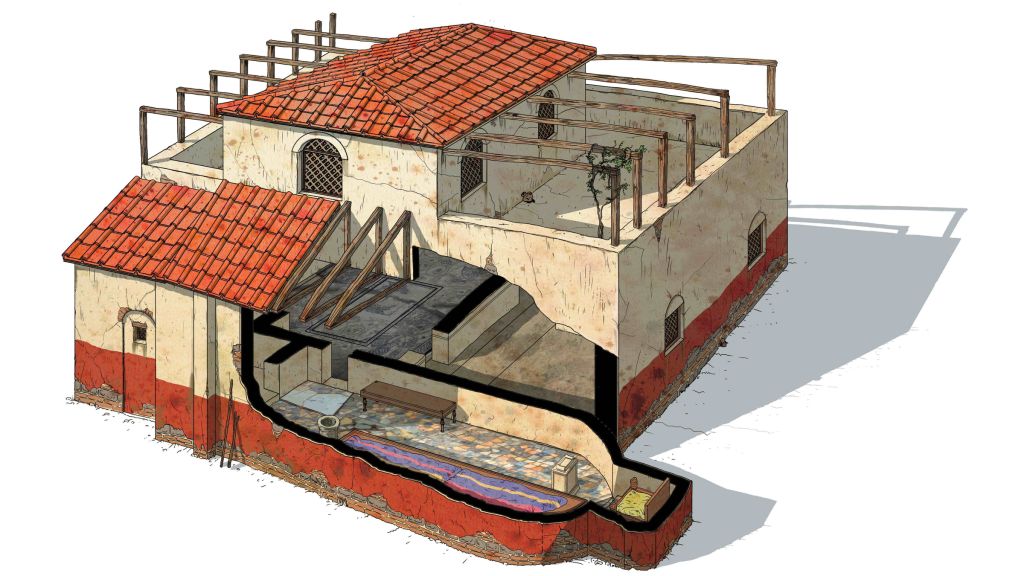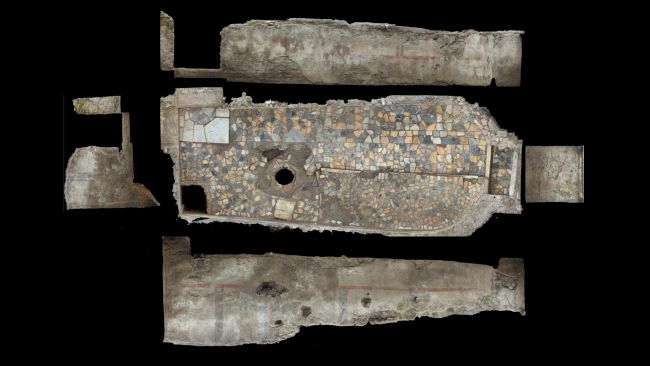Information
Dazzling 'Temple of Colored Marbles' Honoring Roman God Discovered in Italy
Some 1,600 years ago, ancient Romans would have worshipped the god Mithras, possibly in an altered state of consciousness, within the "Mithraeum of Colored Marbles," said archaeologists who found the remains of this temple in Ostia, Italy.
Artifacts and inscriptions found in the mithraeum suggest that the worshippers venerated both Mithras, a popular god in the Roman Empire, and other gods.
The mithraeum's "spelaeum," its most important room, has a stone marble floor decorated with a dazzling array of colors. Also in this room, archaeologists found a bench, a ritual well and a flower bed for some sort of sacred plant, wrote the research team leader Max Victor David, a professor of history and cultures at the University of Bologna in Italy, in a paper published in the journal Acta Antiqua Academiae Scientiarum Hungaricae.
The mithraeum would have seen plenty of rituals in its heyday, including banquets, initiation ceremonies and animal sacrifices, David told Live Science. People who took part in the rituals "were perhaps in a state of altered consciousness," David said. In the ancient world altered consciousness was often achieved through the use of psychotropic plants.
A place for the gods
Persians were the first to worship Mithras, also known as Mithra, who is associated with the light and sun. His cult spread to the Roman Empire and became widely popular.
According to legend, Mithras was an excellent archer who often traveled with his torchbearers, Cautes and Cautopates. Art found in one of the mithraeum's rooms alludes to this, with paintings depicting tridents and arrows. These images probably have "a particular meaning in the Mithraic theology," wrote David, noting that the trident (with three prongs) could be a reference to Mithras and his two torchbearers, while the arrows may represent Mithras' skill with archery.
The people who visited the mithraeum in ancient Rome may have also worshipped Kronos, a Greek god associated with the harvest and time itself. For instance, one inscription found in the mithraeum says, "to the unconquered god Mithras and to the great god Kronos."
The Egyptian goddess Isis may also have been venerated in this mithraeum, as researchers found an Egyptian ivory handle, likely used as a ritual instrument, that "seems to serve as a bridge between the followers of Mithras and those of Isis," David wrote in the journal article.
Changing times
Archaeologists found that much of the structure used to be a "caupona," a tavern or restaurant, before it was fully converted to a mithraeum.
The building's time as a mithraeum appears to have been short. By the early fifth century, Christianity had spread widely in Ostia, and Roman authorities were becoming less tolerant of the worship of Mithras and other gods. At some point in the fifth century, the mithraeum's ritual well was shut down and the mithraeum closed its doors.
The name "Mithraeum of Colored Marbles" is a name that modern day archaeologists gave to the structure.
Category: English
News
Information
Key words:0


